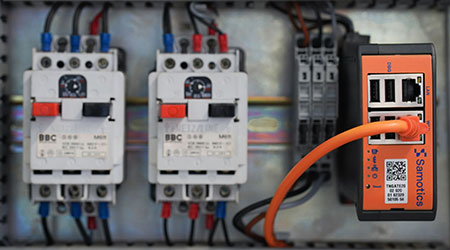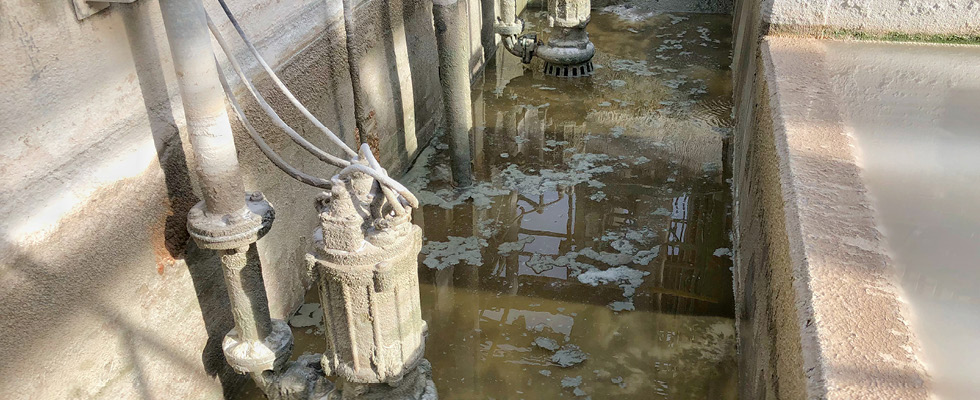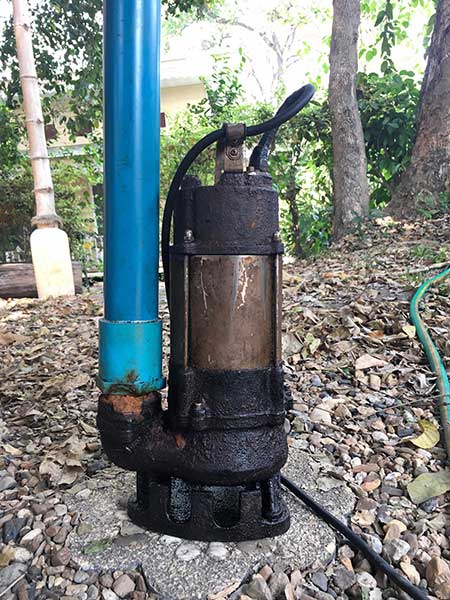
In the water sector, reliability and energy efficiency often appear to be at odds. With challenges like aging infrastructure, an aging workforce, rising energy prices and water scarcity, it can seem that enhancing one aspect might compromise another. For instance, it is a long-standing industry practice to oversize pumps, as bigger pumps are thought to provide a more robust safety margin and higher reliability standard. However, this directly impacts pump efficiency, as it mostly likely means these pumps will operate further away from their best efficiency point (BEP), which impacts energy consumption but also decreases expected asset lifetime.
This article will explore how proactive asset management, supported by continuous condition monitoring, effectively addresses these challenges. By integrating real-time data analytics, utilities can simultaneously improve operational efficiency and reliability, demonstrating that these objectives can complement each other.
Lack of Data-Driven Insight, Scarcity of Experts
Balancing reliability and energy efficiency presents several challenges. Teams often have conflicting interests, with maintenance and operations teams requiring most of their time to perform reactive maintenance and keep systems running, leaving little time to carry out any improvement interventions. Even if there is capacity to act, it is challenging to know what needs to be done and where the most impact can be made. There is often a lack of data and insight into pump operations, which makes it difficult to identify what proactive action to take to tackle inefficiencies or potential failures head on.

Proactive Asset Management Supported by Condition Monitoring
Proactive asset management, supported by advanced condition monitoring technologies, closes this knowledge
gap. Asset-level insights, derived from real-time data analytics, can be a game changer to both reliability and efficiency improvements.
By continuously monitoring a pump’s operation in real time, utilities gain valuable insights into individual pump operation, efficiency and deviation from BEP. This data does not just reveal anomalies, but also shows trends and demand patterns over time, helping to identify which assets are healthy and which are facing upcoming failures. Using this kind of data, utilities can significantly reduce energy consumption and emissions.

However, obtaining asset-level data can be challenging, especially for submerged assets like borehole pumps or sewage pumping stations. Only the most critical assets will typically be equipped with asset-level sensors, like flow, level or pressure sensors. At many other locations, site-level metering is the norm for cost efficiency reasons. Typical pump monitoring solutions like vibration sensors typically are not a viable option for submersible assets. However, electrical signature analysis (ESA), does offer a solution by monitoring the electrical signals of individual pumps.
The Role of ESA
ESA is a powerful condition monitoring technology that analyzes high-frequency electrical waveforms from the motor control cabinet, a safe and nonsubmersed location, to provide real-time insights into the condition of pumps. This noninvasive method allows for continuous monitoring without sewage-proof or battery-powered sensors, making it ideal for submersible and other hard-to-access pumps. Since the technology uses electrical signals, it plays a role in improving reliability and efficiency.

Benefits of Real-Time Pump Performance Data
Real-time alerts
ESA-powered condition monitoring allows for real-time alerts on individual pumps, such as pump clogging by wet wipes or rags, or an overcurrent. This allows action to be taken before the pump issue leads to consequences such as sewage spills, as opposed to commonly used telemetry-based systems that will only alert when, for example, a high-high level sensor is triggered and the damage is already done.
Predictive maintenance
High quality ESA data and AI models allow for continuous insight, detecting faults weeks to months in advance. Notification of early signs ensures maintenance can be scheduled efficiently, avoiding emergency repairs and ensuring the pumps never reach catastrophic failure. By identifying issues before they escalate, utilities can extend the life span of equipment and maintain uninterrupted service.
Preventive inspection planning
A highly accurate overview of pump health also allows more effective preventive inspections management. Knowing
where issues are expected—and also which sites are healthy—allows maintenance teams to prioritize visits to sites with the most critical issues. What is more, visits to healthy sites could even be reduced, freeing up capacity and budget for more important interventions.
Enhanced energy efficiency
By comparing actual pump operation to the pumps’ BEP, ESA technology identifies inefficiencies and suggests operational adjustments. Optimizing duty/assist selection, control setpoints or variable frequency drive (VFD) settings can often lead to significant energy savings without capital expenditure (CAPEX) investments. In other places, having a data-backed business case for installing a VFD or upgrading a motor can be an investment with a short payback time. An overview of energy saving opportunities across a fleet of pumps helps prioritize the interventions that have the biggest impact on energy savings, costs and carbon emissions.
Sewage Pumping Station & Impeller Wear
At a wastewater utility, a troublesome sewage pumping station faced frequent clogged screens and reduced reliability. In a recent effort, the screens were removed and new sewage pumps that were rated to handle solids and debris were installed. However, within a year and a half, the station again showed signs of decreasing delivered flow and a need for frequent cleaning and maintenance.
The utility then decided to use ESA to monitor these pumps. This technology detected increasing specific energy consumption and indicators of worn impellers. Armed with this data, the utility worked with the pump manufacturer to refurbish the impellers, resulting in a 44% improvement in efficiency and more than $250,000 in annual cost savings.
Wastewater Treatment Site & Effluent Pumps
In another case, a wastewater treatment plant operator noticed one of their effluent pumps at times made strange noises. Since effluent flows were not impacted and available vibration sensors did not indicate any issues, it was hard to determine a course of action.
Once ESA technology was installed, this system identified that a third pump was often activated at flows and heads that two pumps could easily handle, causing inefficiencies. By adjusting the VFD settings, the utility was able to operate their pumps more efficiently, saving $60,000 per annum (p.a.) in energy. This made all pumps operate closer to their BEP, not only improving energy efficiency but also extending the life span of the pumps by reducing wear and tear.
Long-Term Maintenance Strategy: Future Outlook
The integration of digital technologies like ESA into long-term maintenance strategies offers a tool to close a crucial gap in the monitoring of submersible or hard-to-reach assets. Real-time data provides actionable insights that help in decision-making, from scheduling immediate corrective actions to implementing long-term process improvements. By continuously monitoring pump performance and making data-driven adjustments, utilities can ensure their assets operate efficiently and reliably over the long term.
In a typical condition monitoring tool suite, ESA is still considered a newcomer compared to more traditional vibration-based monitoring. However, in the future this is likely to change. As more assets such as electric motors and VFDs become connected, the data that fuels ESA may be readily available in most, if not all, pumps out of the box. This means ESA could become an integral part of the condition monitoring suite, without the need to install additional sensors. Real-time pump performance data, enabled by ESA technology, offers a low-risk, high-return on investment (ROI) solution for improving pump reliability and efficiency.
By providing early warnings of potential failures and actionable insights for energy optimization, ESA helps water utilities address the dual challenge of reliability and energy efficiency. By embracing this technology, utilities can enhance their maintenance strategies, improve service reliability and contribute to a more sustainable future.

